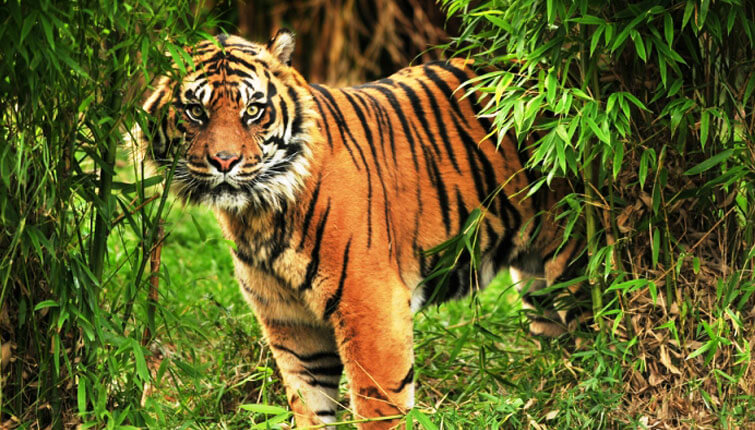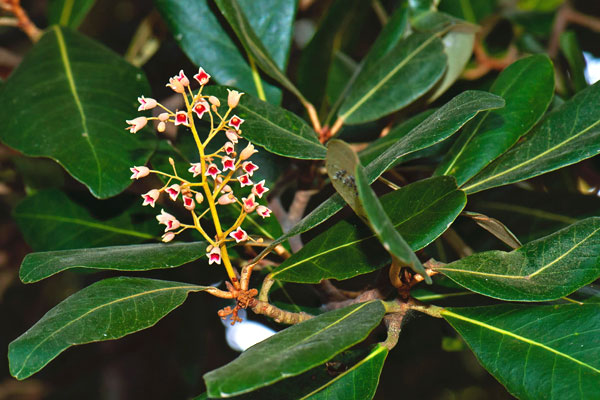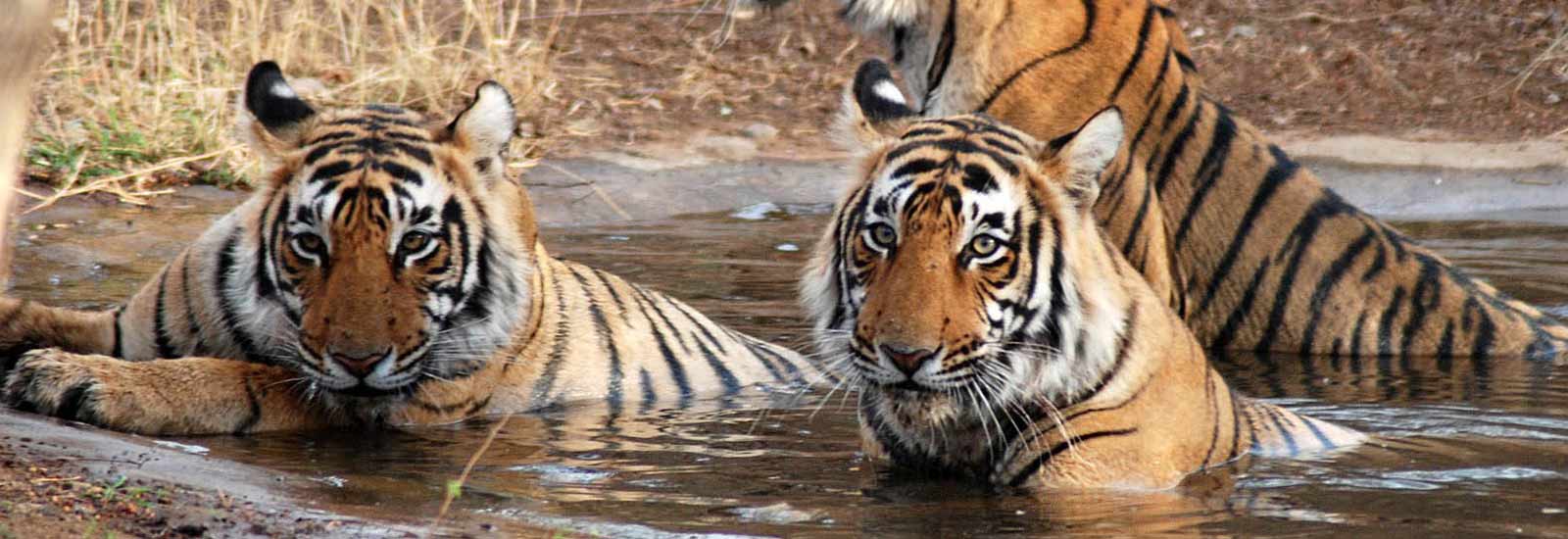Plants and Animals of Sundarbans: The Sundarbans are renowned for their incredible wildlife, with the Royal Bengal Tiger being the most iconic inhabitant. The region is home to a wide array of species, from mammals and reptiles to birds and marine creatures. The interconnected rivers, swamps, and forests create the perfect conditions for the survival of these animals, making the Sundarbans one of the most biodiverse places on Earth.

a. Mammals of the Sundarbans
- Royal Bengal Tiger: The Sundarbans is perhaps most famous for its population of Royal Bengal Tigers, one of the largest and most elusive tiger species in the world. These magnificent creatures are known for their swimming abilities and their adaptability to the mangrove forests. Royal Sundarban Tourism offers guided tours with expert naturalists to help you spot these majestic animals in their natural habitat, from safe observation points.
- Fishing Cat (Prionailurus viverrinus): The fishing cat is another significant predator in the Sundarbans. As the name suggests, this medium-sized wild cat is an excellent swimmer and primarily hunts fish. Due to its elusive nature, spotting a fishing cat in the wild is a rare and special experience.
- Spotted Deer (Axis axis): The spotted deer, or chital, is one of the most commonly seen herbivores in the Sundarbans. These graceful animals often travel in large herds and can be seen grazing in the clearings of the mangrove forests. The deer are a primary prey species for the Royal Bengal Tiger.
- Wild Boar (Sus scrofa): Another prey animal for the tiger, the wild boar is frequently seen in the Sundarbans. These animals are strong swimmers and are often spotted foraging near the mangroves.
- Rhesus Macaque (Macaca mulatta): These playful primates are common in the Sundarbans, often spotted climbing trees or scavenging near human settlements. They are highly adaptive and live near water sources. Also, you can Book the Sundarban Tour At Maity Tourism and Sundarban Leisure Tourism Powered By Argusdna. We can check more about “Plants and Animals of Sundarbans”

b. Reptiles and Amphibians of the Sundarbans
The Sundarbans is also home to a rich variety of reptiles and amphibians, many of which thrive in the waterlogged environment.
- Saltwater Crocodile (Crocodylus porosus): The saltwater crocodile, one of the largest reptiles in the world, is commonly found in the Sundarbans’ rivers and estuaries. These formidable predators are known for their ability to hunt both in water and on land, and they are a vital part of the Sundarbans’ ecosystem.
- Monitor Lizard (Varanus salvator): Monitor lizards are large reptiles that can often be seen basking in the sun or hunting for small prey in the mangrove forests. They play an essential role in controlling the population of smaller animals in the region.
- King Cobra (Ophiophagus hannah): One of the most venomous snakes in the world, the king cobra is occasionally found in the Sundarbans, though it is rarely seen by visitors due to its reclusive nature.
Read more:

c. Birdlife in the Sundarbans
The Sundarbans is a birdwatcher’s paradise, with over 300 species of birds calling this region home. The unique environment of the mangrove forest, combined with the abundance of water, makes the Sundarbans an ideal nesting and feeding ground for many migratory and resident bird species.
- Brown-Winged Kingfisher (Pelargopsis amauroptera): This striking bird, with its bright orange beak and vibrant plumage, is commonly seen near the water, where it hunts for fish.
- Lesser Adjutant Stork (Leptoptilos javanicus): The lesser adjutant stork is a large, wading bird often seen in the wetlands of the Sundarbans. It feeds on fish, amphibians, and small reptiles, and its impressive wingspan makes it a sight to behold.
- Black-Capped Kingfisher (Halcyon pileata): This small but colourful bird is frequently seen in the Sundarbans, where it feeds on fish and insects. Its bright blue and black feathers make it one of the most eye-catching birds in the region.
- White-Bellied Sea Eagle (Haliaeetus leucogaster): This majestic bird of prey can often be seen soaring over the rivers and creeks of the Sundarbans, hunting for fish and small animals. Its powerful wings and sharp talons make it one of the top predators in the avian world.
- Pied Avocet (Recurvirostra avosetta): This wading bird, with its distinctive upturned beak, is a common sight in the Sundarbans’ tidal flats. It feeds on small invertebrates and is often seen in large flocks during the migratory season. We can discover more about “Plants and Animals of Sundarbans”

3. Conservation Efforts in the Sundarbans
The rich biodiversity of the Sundarbans is under threat due to climate change, rising sea levels, deforestation, and illegal poaching. Conservation efforts are crucial to ensuring that the unique flora and fauna of the Sundarbans are preserved for future generations.
Both the Indian and Bangladeshi governments, along with several non-governmental organizations, are working to protect the wildlife and habitat of the Sundarbans. Strict regulations have been put in place to limit human interference in sensitive areas, and reforestation projects are ongoing to restore degraded mangrove forests. We have the opportunity to explore further “Plants and Animals of Sundarbans”
Royal Sundarban Tourism is committed to promoting sustainable tourism practices that minimize the impact on the environment. By offering eco-friendly tours and educating visitors on the importance of conservation, Royal Sundarban Tourism helps support local communities and contributes to the preservation of this vital ecosystem.

4. Exploring the Sundarbans with Royal Sundarban Tourism
For those who want to experience the beauty and diversity of the Sundarbans firsthand, Royal Sundarban Tourism offers a range of guided tours that take you deep into the heart of this incredible ecosystem. Whether you

are interested in birdwatching, wildlife spotting, or simply immersing yourself in the serene beauty of the mangroves, there is a tour to suit every interest.
- Wildlife Safari: Experience the thrill of spotting the Royal Bengal Tiger and other exotic wildlife on a guided safari through the mangroves.
- Birdwatching Tours: Discover the rich avian life of the Sundarbans with expert birdwatching guides who will help you identify various species.
- Cultural Experiences: Immerse yourself in the local culture by visiting nearby villages, enjoying traditional music and dance, and sampling authentic Sundarban cuisine.
- Eco-Tours: Engage in responsible tourism practices by participating in eco-tours that focus on conservation and sustainability.
With Royal Sundarban Tourism, you can create unforgettable memories while contributing to the preservation of this unique and vital ecosystem. We can delve deeper into “Plants and Animals of Sundarbans”

Conclusion Of Plants and Animals of Sundarbans
The Sundarbans is not just a destination; it is a treasure trove of biodiversity that must be cherished and protected. Its unique flora and fauna offer a glimpse into the intricate balance of nature and the importance of conservation efforts. Exploring the Sundarbans with Royal Sundarban Tourism provides an enriching experience that combines adventure, education, and a deep appreciation for one of the world’s most extraordinary ecosystems.
